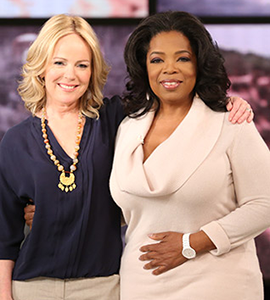On Memoir
A few days ago, while looking up a book I was interested in reading on Amazon.com, I suffered a momentary setback and broke one of my own rules–a rule I keep in place out of self-preservation: I searched my own name, and began to read about myself online. In this particular case, since I was on Amazon, this involved reading reviews of some of my books. Amazon has this helpful little sidebar (not) in which someone browsing can see an example of a five star review and an example of a one star review.
Which do you think I was interested in?
Right. I clicked on the one star review for Slow Motion, the memoir I first published in 1998. When a writer is in an evil, self-Googling mood, she is not on the hunt for glowing reviews, positive feedback, happy and generous people. No. A writer in the midst of self-Googling is stuck in the muck of her own mind. She is flailing, tumbling head over heels down a slope that can only end in pain and insult. Pretentious cry baby, one reader offered. She had read Slow Motion in a women’s lit class. But it was a review right beneath it that caught my eye: Why did she omit her 1981 marriage?
Someone had done her research. She had dug up details about my very brief marriage at the age of eighteen–she even knew what the poor, hapless fellow who had the bad sense to marry me had done for a living (he owned an art gallery/clothing store). She was infuriated that I hadn’t written about that baby marriage in the pages of Slow Motion. That I had somehow duped the reader by not revealing everything about my life.
What is the job of the memoirist? Is it to tell all? Or is it to carve a story out of memory?
I always begin classes on memoir by discussing with my students the difference between autobiography and memoir. Autobiography presumes that the person writing the book is important, and the reader is drawn to the book out of a desire to know more about that person. It would be unreasonable for Hillary Clinton, say, to omit an early marriage from her autobiography. But memoir is story-telling. No one reads Slow Motion or Devotion because they want to know more about Dani Shapiro. They don’t read This Boy’s Life because they want to know more about Tobias Wolff. Or Lit because they’re determined to get to the bottom of the question: who is Mary Karr? No–these memoirs are stories, hewing as closely to the truth of the writer’s memory as possible–but not letting it all hang out. Part of the art of memoir is seeing, and recognizing the story itself. Life is messy. Art takes gathers up the chaos and gives it form.
If I had written about that early, baby-marriage in Slow Motion, the reader would have misunderstood me. The reader would have imposed certain societal ideas (divorce equals maturity, for instance) onto me, thereby not understanding the extreme childishness, the amoeba-like lack of sense of self, and yes, the innocence, that propelled me into the circumstances I wrote about in my memoir, of a long and garish affair with an older married man. If I had portrayed myself as a teenaged divorcee, it would have confused the reader. It would have, in fact, misled the reader, even though it was a fact of my life. And so I left it out — and wrote about it later, in a piece in The New Yorker, a piece where that information was useful to the narrative.
I am aware that this is incendiary stuff. That perhaps some people feel that omission is on a par with invention — which is an idea I find infuriating myself. I wanted to write back to that Amazon reader and say: I don’t owe you my life served up on a platter. We writers who mine our personal veins, who find the stories in our own lives and dive deep, searching for the ways to make order out of chaos, are not doing so because we want to be reality TV stars, or because we’re exhibitionists, or narcissists. We are not publishing our journals, or imagining ourselves to be so important that people are actually interested in the details of our lives. No. We are taking those details and lining them up, amazed, astonished, rapt the way a child might be, building blocks to form a tower. We are attempting to make sense out of what we can — to reach out a hand to the reader across a rough sea of isolation and separateness and offer up something that has shape, integrity, even beauty and symmetry.
Just like life? Hardly. But that isn’t our job.


















